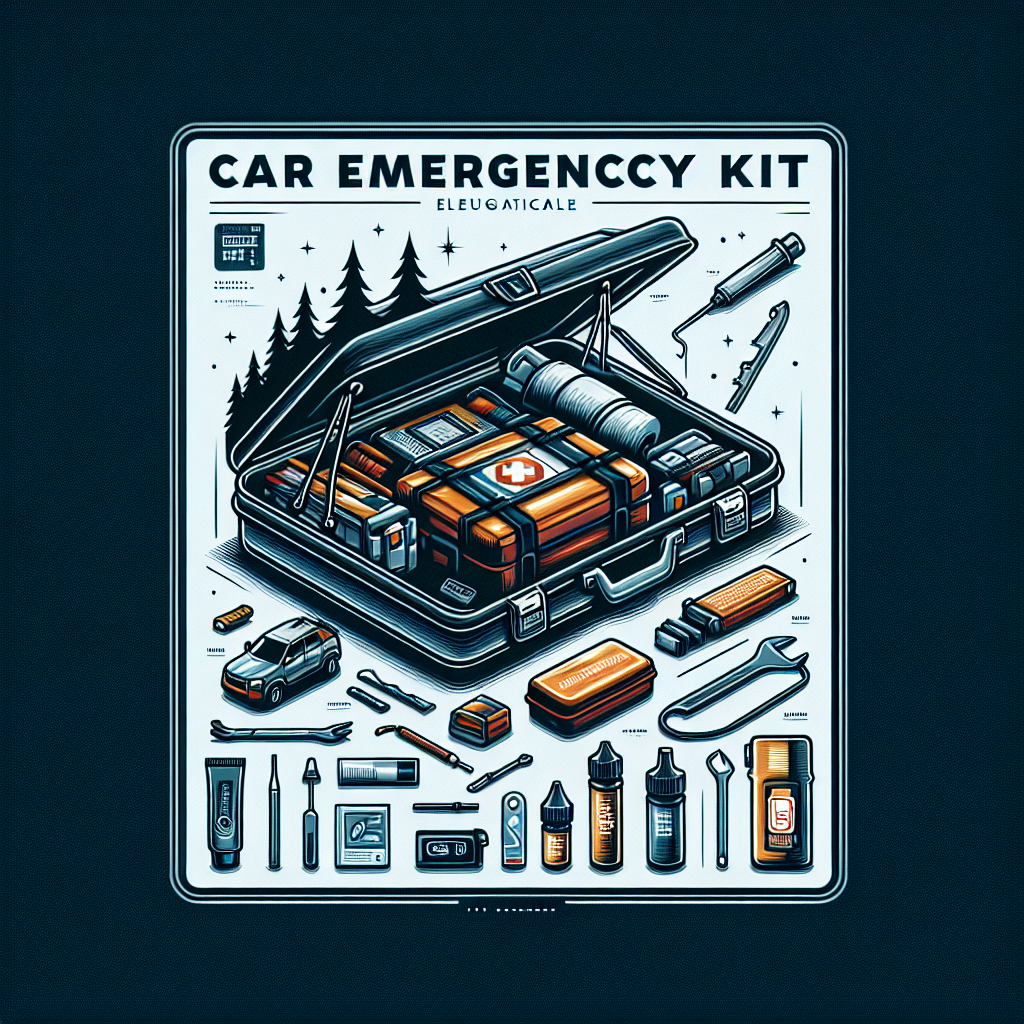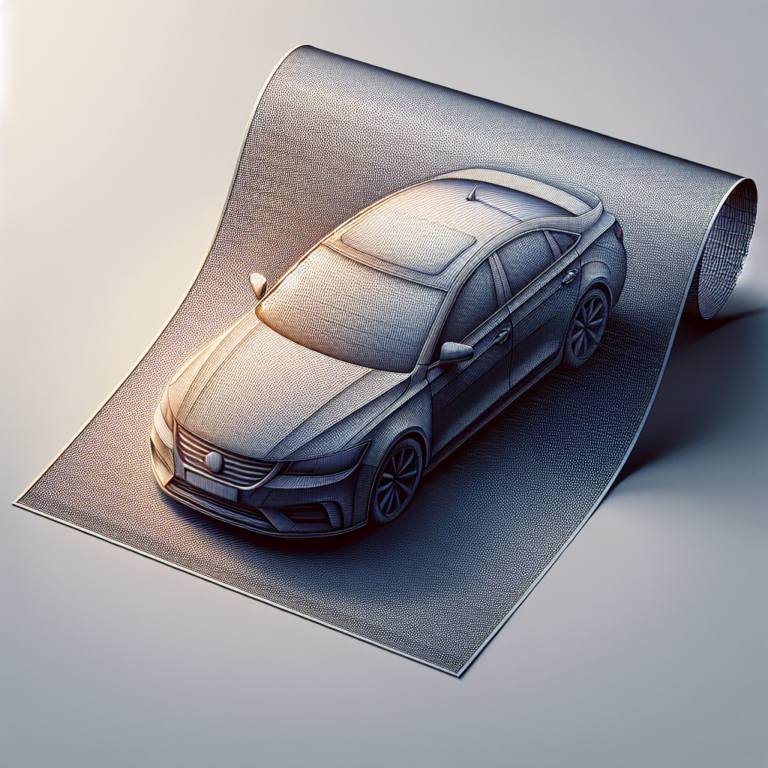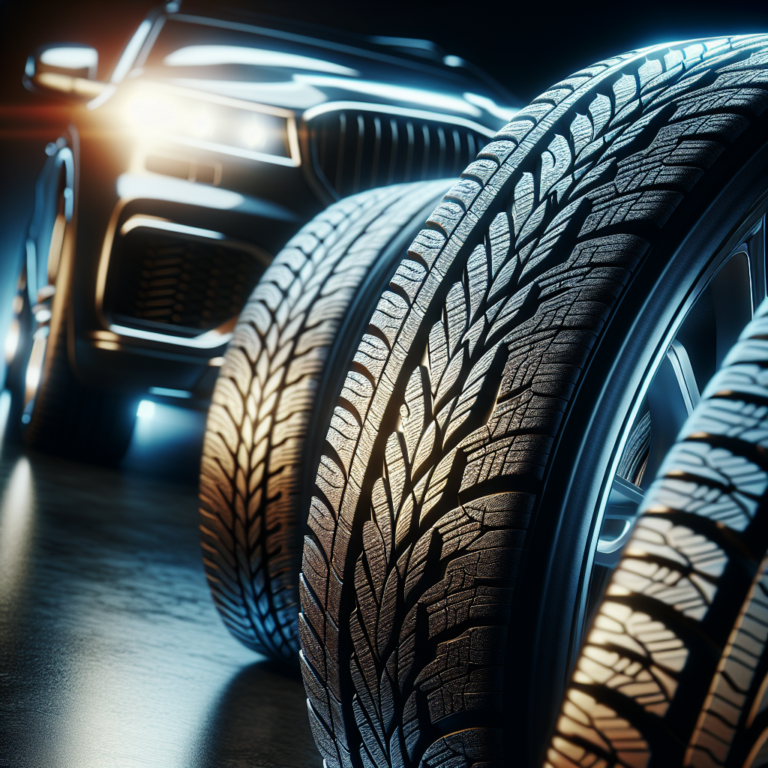Importance of Car Emergency Kits
When it comes to car ownership, being prepared for unexpected situations is essential. Car emergency kits are an integral part of ensuring your safety and the safety of your passengers on the road. Let’s explore why every car owner needs an emergency kit and the benefits of being prepared.
Why Every Car Owner Needs an Emergency Kit
Car emergencies can happen at any time and in any place. Whether it’s a flat tire, a dead battery, or a minor accident, having the right tools and supplies can make a significant difference in handling the situation effectively. Here are a few reasons why every car owner needs an emergency kit:
-
Safety: An emergency kit equips you with essential items to handle unexpected incidents and ensures the safety of yourself and others. It allows you to address minor injuries, provide temporary fixes, or signal for help if necessary.
-
Self-Reliance: Having an emergency kit in your car means you are self-reliant and not solely dependent on external assistance. It empowers you to take immediate action and potentially resolve minor issues without waiting for roadside assistance.
-
Peace of Mind: Knowing that you have a well-stocked emergency kit in your car provides peace of mind. It allows you to drive with confidence, knowing that you are prepared for unforeseen circumstances that may arise during your journey.
Benefits of Being Prepared
Being prepared with a car emergency kit offers several benefits that extend beyond immediate safety. Let’s explore some of these benefits:
-
Time and Cost Savings: With the right tools and supplies on hand, you can quickly address minor issues and potentially avoid costly repairs or delays. For example, having a spare tire and the necessary tools to change it can save time and money compared to waiting for roadside assistance.
-
Minimized Disruptions: Car emergencies can disrupt your plans and daily routine. However, with an emergency kit, you can handle unexpected situations efficiently, minimizing disruptions and getting back on the road as soon as possible.
-
Assistance to Others: Carrying an emergency kit not only benefits you but also allows you to help others in need. You might encounter someone on the road who requires immediate assistance, and having the necessary supplies can make a significant difference in their situation.
By recognizing the importance of car emergency kits and understanding the benefits of being prepared, car owners can take proactive steps to ensure their safety and be ready to handle unexpected situations. Remember to periodically check and replenish the supplies in your emergency kit to ensure that it remains up to date and ready for use.
In the next section, we will explore the essential items that should be included in a car emergency kit to help you be prepared for various situations.
Essential Items for a Car Emergency Kit
When it comes to being prepared for car emergencies, having the right items in your car emergency kit is essential. These items can help you handle unexpected situations and ensure your safety on the road. Here are three essential items that should be included in your car emergency kit:
First Aid Kit
A well-stocked first aid kit is a must-have in any car emergency kit. It should contain basic medical supplies to address minor injuries and provide temporary aid until professional help arrives. Some essential items to include in your first aid kit are:
- Adhesive bandages of various sizes
- Sterile gauze pads and adhesive tape
- Antiseptic wipes or solution
- Tweezers and scissors
- Disposable gloves
- Pain relievers and over-the-counter medications
- First aid manual or guide
Having a first aid kit on hand can make a significant difference in an emergency situation. Make sure to periodically check the contents of your kit and replace any expired or depleted items.
Emergency Tools and Equipment
Car emergencies often require specific tools and equipment to address the situation effectively. Your car emergency kit should include the following essential tools:
- Tire pressure gauge and portable air compressor: These tools help you maintain optimal tire pressure and address any flat tire issues.
- Jumper cables or a portable jump starter: These tools are essential for jump-starting a dead battery and getting your vehicle running again.
- Reflective warning triangles or flares: These devices alert other drivers to your presence in case of a breakdown or accident, improving safety on the road.
- Multi-tool or utility knife: These versatile tools can assist with various tasks, such as cutting seatbelts or opening packages.
- Duct tape and zip ties: These items can provide temporary fixes for certain car issues until you can reach a professional mechanic.
Including these tools and equipment in your car emergency kit will help you handle common roadside emergencies and ensure your safety.
Communication and Lighting Devices
During a car emergency, communication and visibility are crucial. Ensure your car emergency kit includes the following items:
- Fully charged mobile phone and car charger: These allow you to call for help and stay connected during an emergency.
- Reflective vest or brightly colored clothing: Wearing high-visibility clothing makes you more visible to other drivers and emergency personnel.
- LED flashlight and extra batteries: A flashlight is essential for providing illumination in the dark and inspecting your vehicle.
- Whistle or signaling device: These devices can attract attention and alert others to your presence in case of an emergency.
By including these communication and lighting devices in your car emergency kit, you’ll be better prepared to handle roadside emergencies and effectively communicate your situation to others.
Remember, it’s important to periodically check and update your car emergency kit to ensure that all items are in good condition and up-to-date. Additionally, consider storing your emergency kit in an easily accessible location within your vehicle, such as the trunk or glove compartment. Being prepared with these essential items can give you peace of mind and help you stay safe on the road.
Extra Supplies for Long Trips or Extreme Conditions
While a basic car emergency kit is essential for any car owner, additional supplies are necessary for long trips or when facing extreme conditions. These extra supplies will help ensure your safety and comfort during challenging situations.
Food and Water
When embarking on a long trip or traveling through areas with limited access to food and water, it’s crucial to pack an adequate supply. In your car emergency kit, include non-perishable food items such as energy bars, canned goods, and dried fruits. These foods have a longer shelf life and can sustain you in case of unexpected delays or emergencies. Additionally, don’t forget to include a manual can opener if needed.
Water is equally important, especially in situations where access to clean water may be limited. Pack bottled water or invest in water pouches that are specifically designed for emergency situations. Aim for at least one gallon of water per person per day to cover drinking and sanitation needs.
Warm Clothing and Blankets
For long trips or during extreme weather conditions, it’s crucial to have warm clothing and blankets in your car emergency kit. Pack extra layers of clothing such as jackets, hats, gloves, and socks to keep yourself warm in case of a breakdown or being stranded in cold weather. Additionally, include thermal blankets or sleeping bags that are designed to retain body heat and provide insulation.
Additional Safety Items
In addition to the basic safety items in your car emergency kit, consider including additional supplies for specific situations. These can include:
- Reflective vest: A reflective vest ensures visibility and safety if you need to exit your vehicle in low-light conditions or on busy roadsides.
- Emergency flares or warning triangles: These devices alert other drivers to your presence and can help prevent accidents.
- Portable battery charger: A portable battery charger can come in handy if your car battery dies and there are no nearby sources of assistance. Check out our article on car battery chargers for more information.
- Multipurpose tool: A multipurpose tool that includes features such as a knife, pliers, screwdrivers, and a seatbelt cutter can be invaluable in various emergency situations.
- Fire extinguisher: Compact fire extinguishers designed for automotive use can be useful in case of small fires that may occur due to accidents or engine issues.
By including these extra supplies in your car emergency kit, you can be better prepared for long trips and extreme conditions. Remember to periodically check and replace any expired or damaged items to ensure their effectiveness when needed. Stay informed about the weather conditions and terrain you’ll be encountering, and tailor your emergency kit accordingly. Being prepared will give you peace of mind and ensure your safety on the road.
Customizing Your Car Emergency Kit
When it comes to preparing for emergencies on the road, it’s important to customize your car emergency kit to meet your specific needs. Every driver’s requirements may vary depending on factors such as their driving habits, location, and the specific challenges they may face. In this section, we will explore tailoring the kit to your specific needs and considerations for different climates and terrains.
Tailoring the Kit to Your Specific Needs
To ensure you have the necessary items in your car emergency kit, it’s crucial to assess your specific needs. Consider factors such as the distance you typically travel, the weather conditions in your area, and the number of passengers in your vehicle. Additionally, think about any specific medical conditions or special requirements of your passengers.
Here are some items to consider including in your customized car emergency kit:
- Medication: If you or any of your passengers require regular medication, make sure to have an adequate supply in your emergency kit.
- Baby and child essentials: If you have young children, remember to include items such as diapers, formula, and baby food.
- Pet supplies: For pet owners, include items like food, water, and any necessary medications for your furry companions.
- Additional personal items: Depending on your needs, you may want to include items such as spare glasses, contact lens supplies, or personal hygiene products.
By tailoring your car emergency kit to your specific needs, you can ensure that you are well-prepared for any situation that may arise on the road.
Considerations for Different Climates and Terrains
The climate and terrain of your location can greatly impact the challenges you may face in an emergency. It’s important to consider these factors when customizing your car emergency kit.
For cold climates or areas prone to snow and ice, include the following items:
- Ice scraper and snowbrush: These tools will help you clear your windshield and windows for better visibility.
- Extra warm clothing and blankets: Keep additional warm clothing, gloves, hats, and blankets to stay warm in case of a breakdown in cold weather.
- Hand warmers: These small, portable heat sources can provide warmth in cold conditions.
- Traction aids: Include items like sand or cat litter to improve traction if your vehicle gets stuck in snow or ice.
- Shovel: A small folding shovel can be handy in case you need to dig your vehicle out of the snow.
For hot climates or areas with extreme heat, consider including the following items:
- Sun protection: Pack sunscreen, sunglasses, and a hat to protect yourself from the sun’s harmful rays.
- Extra water: Staying hydrated is essential in hot weather, so carry extra drinking water in your car emergency kit.
- Reflective emergency blanket: This type of blanket can help reflect heat and keep you cool in case of a breakdown in extreme heat.
- Umbrella: Carry a compact umbrella to provide shade if you need to wait outside your vehicle.
By considering the unique challenges of your climate and terrain, you can ensure that your car emergency kit is well-suited to handle any situation you may encounter on the road.
Remember, regularly reviewing and updating your car emergency kit is essential to ensure its effectiveness. Check expiration dates on items such as medications and food, and replace any items that have been used or are past their expiration. By staying informed and prepared, you can have peace of mind knowing that you are ready to face any unexpected situations that may arise while on the road.
Maintaining and Updating Your Kit
To ensure the effectiveness of your car emergency kit, it is essential to regularly inspect and update its contents. By conducting routine checks and replacing expired or used items, you can stay prepared for any unexpected situation that may arise on the road.
Regular Inspections and Expiration Dates
Performing regular inspections of your car emergency kit is crucial to ensure that all items are in good condition and ready for use. Set a reminder to inspect your kit at least twice a year. During the inspection, pay close attention to the expiration dates of perishable items such as medications, food, and batteries.
Create a checklist to make the inspection process easier:
| Items to Check | Notes |
|---|---|
| First Aid Kit | Check expiration dates of medications and restock supplies as needed. |
| Emergency Tools and Equipment | Ensure that all tools are in good working condition and replace any damaged or worn-out items. |
| Communication and Lighting Devices | Test batteries and replace them if necessary. Check the functionality of devices such as flashlights, radios, and cell phone chargers. |
By regularly inspecting your car emergency kit, you can identify any items that require replenishing or updating, ensuring that your kit remains fully functional and ready for use in case of an emergency.
Adding New Items and Replacing Used Items
As technology advances and new safety products become available, it’s important to stay informed about the latest additions to car emergency kits. Consider adding new items that can enhance your preparedness on the road. For example, you may want to include a portable jump starter for your car battery or a compact tire inflator for unexpected flat tires. Assess your specific needs and research the latest developments in car emergency preparedness to keep your kit up to date.
Additionally, if you have used any items from your emergency kit during an actual emergency or while assisting others, make sure to replace them promptly. Restocking your kit after each use ensures that it remains fully equipped for future emergencies.
Staying Informed and Prepared
It’s essential to stay informed about changing weather conditions, road closures, and other potential hazards. Regularly check local weather forecasts and road conditions before embarking on a trip. This information can help you anticipate any challenges you may face and ensure that your car emergency kit is tailored to the specific conditions you might encounter.
Stay prepared by reviewing articles and resources related to car emergency preparedness, such as our article on car emergency kits. Being knowledgeable about best practices and the latest developments in car safety will help you make informed decisions when updating and maintaining your kit.
By conducting regular inspections, updating expired or used items, and staying informed about car emergency preparedness, you can maintain a reliable and effective car emergency kit. Remember, being prepared can make all the difference in ensuring your safety and the safety of others on the road.






